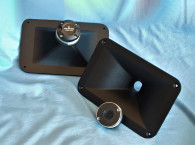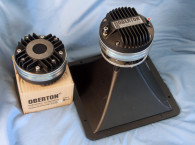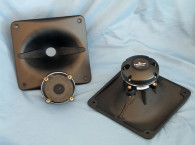

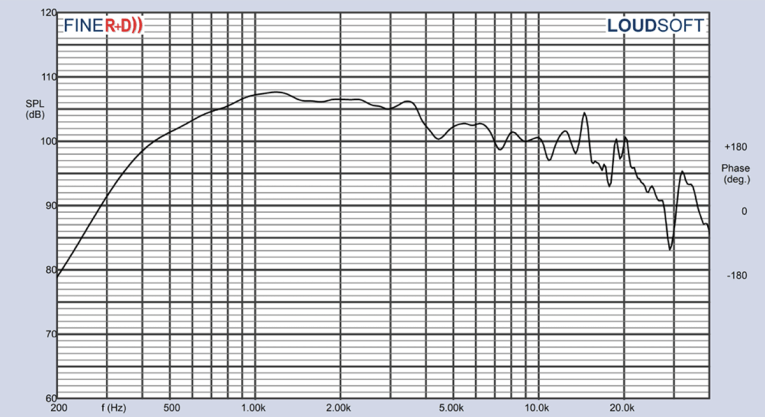
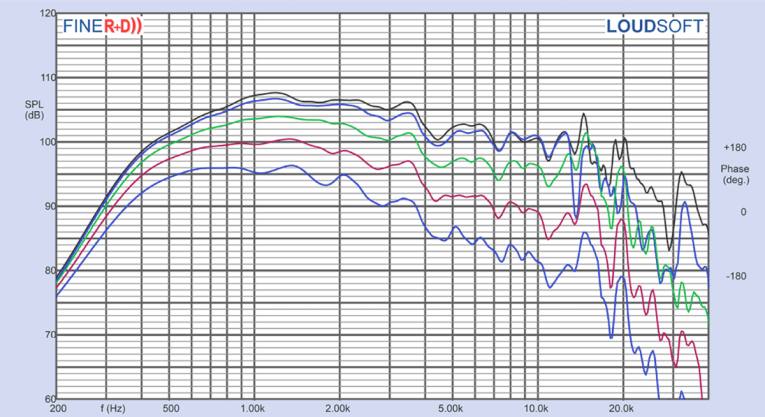
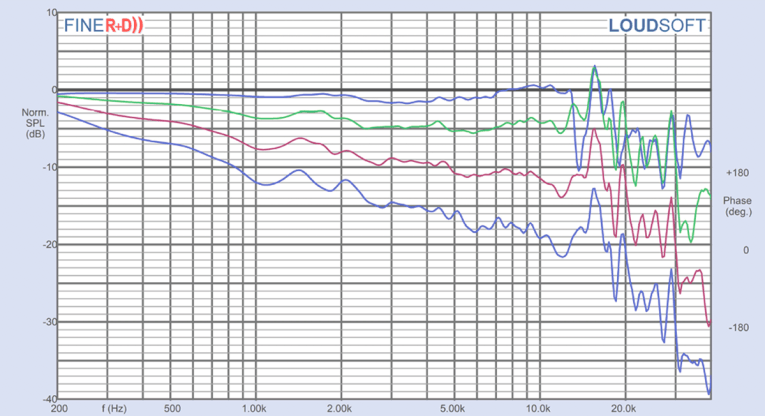
Designed for use with 1.4” throat horns, the CDX14-3040 (which is an updated neodymium version of the CDX14-3030 ferrite compression driver) has a 35.6 mm (1.4”) throat diameter driven by a 75 mm (3”) diameter voice coil wound with edge-wound copper-clad aluminum wire (CCAW) on a non-conducting former driving a single-piece titanium diaphragm and surround (see Photo 1). The diaphragm is fixed using Celestion’s Sound Castle soft clamping assembly methodology, which purports to reduce the stress associated with holding the diaphragm in place, decreasing distortion and increasing reliability. The CDX14-3040 also incorporates a three-slot annular phase plug and an acoustically damped diecast aluminum cover.
Other features include an FEA-optimized neodymium magnet motor structure, a continuous power handling of 150 W with a 75 WRMS power handling rating, a 1 kHz recommended crossover frequency (with a minimum 12 dB/octave high-pass network), and 1 W/1 m 106.5 dB sensitivity (measured 2 π on a typical horn). Along with the CDX14-3040, Celestion supplied its new 1.4” H14-7050 70° × 50° constant directivity horn. The H14-7050 should be in production by the time you read this report, but my version was 3-D printed.
I began testing using the LinearX LMS analyzer to produce the 300-point stepped sine wave impedance plot shown in Figure 1, with the solid black curve the CDX14-3040 mounted on the H1-7050 horn and the dashed blue curve representing the compression driver without the horn. With a nominal 8 Ω impedance, the CDX14-3040 had 5.98 Ω DCR, with minimum impedance mounted on the H14-7050 horn of 7.65 Ω and at 4 kHz.
For the next set of SPL measurements, I free-air mounted the Celestion CDX14-3040/H14-7050 combination without an enclosure and measured both the horizontal and vertical on- and off-axis at 2 V/0.5m (normalized to 2.83 V/1 m) from 0° on-axis to 60° off-axis using the LoudSoft FINE R+D analyzer and the GRAS 46BE microphone (supplied courtesy of LoudSoft and GRAS Sound & Vibration). Figure 2 displays the on-axis frequency response of the CDX14-3040/H14-7050 combination, which is relatively smooth with no major anomalies from the 1 kHz recommended crossover frequency to about 20 kHz, with the typical downward sloping response of a constant directivity horn and very controlled breakup peaks at 1.6 kHz and 20 kHz.
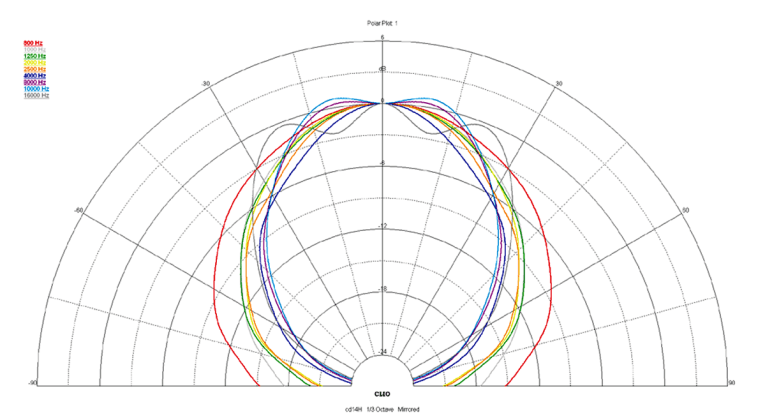
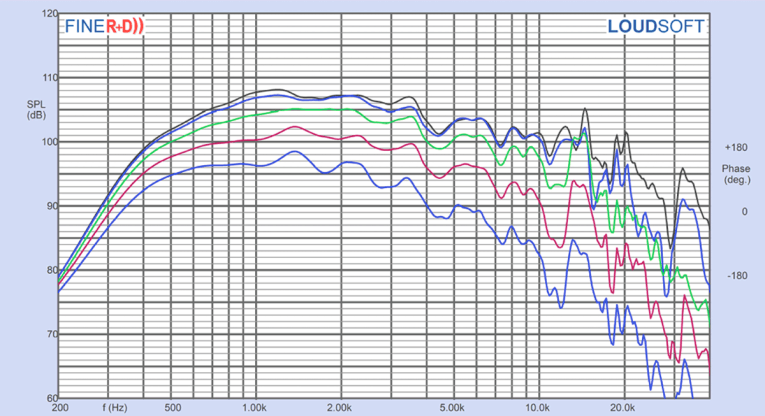

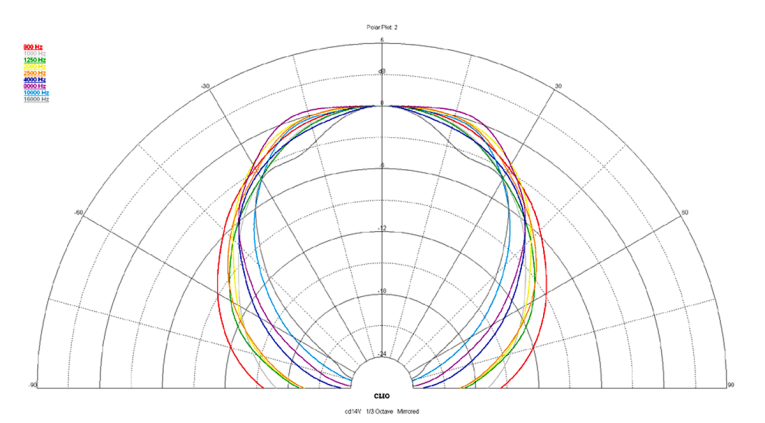
Figure 3 shows the 0° to 60° on- and off-axis response in the horizontal plane. Figure 4 shows the normalized horizontal plane response. Figure 5 shows the 180° horizontal polar plot (in 10° increments with1/3 octave smoothing applied) generated by the CLIO Pocket analyzer and accompanying microphone (courtesy of Audiomatica SRL). Figure 6 gives the on- and off-axis 0° to 60° response in the vertical plane. Figure 7 depicts the normalized vertical plane response. Figure 8 shows the CLIO Pocket-generated 180° vertical plane polar plot (also in 10° increments with 1/3 octave smoothing applied). Last, Figure 9 illustrates the two-sample SPL comparison showing the two Celestion CDX14-3040/H14-7050 compression driver samples to be closely matched within 1 dB or less above the recommended crossover frequency of 2 kHz to above 20 kHz.
For the remaining series of tests, I set up the Listen, Inc. AudioConnect analyzer and 1/4” SCM microphone (provided by Listen, Inc.) to measure distortion and generate time-frequency plots. For the distortion measurement, I again mounted the Celestion CDX14-3040/H14-7050 combination in free-air in the same manner as was used for the frequency response measurements, and set the SPL to 104 dB at 1m (2.1 V determined by using a pink noise stimulus generator and internal SLM in the V17 SoundCheck software). Then, I measured the distortion with the Listen, Inc. microphone placed 10 cm from the mouth of the horn. This produced the distortion curves shown in Figure 10. Note the extremely low third-harmonic level.
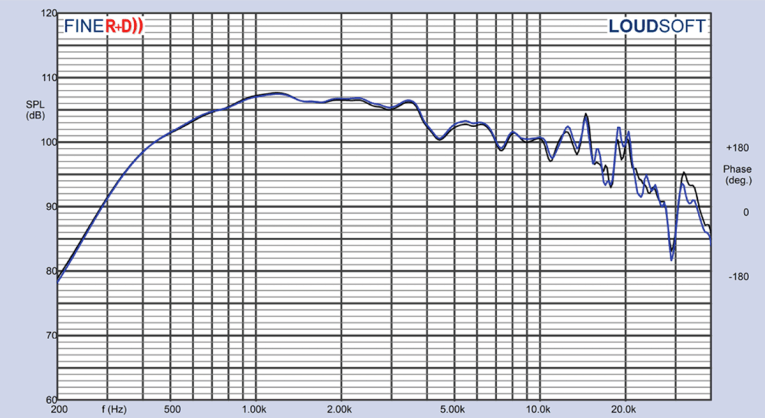
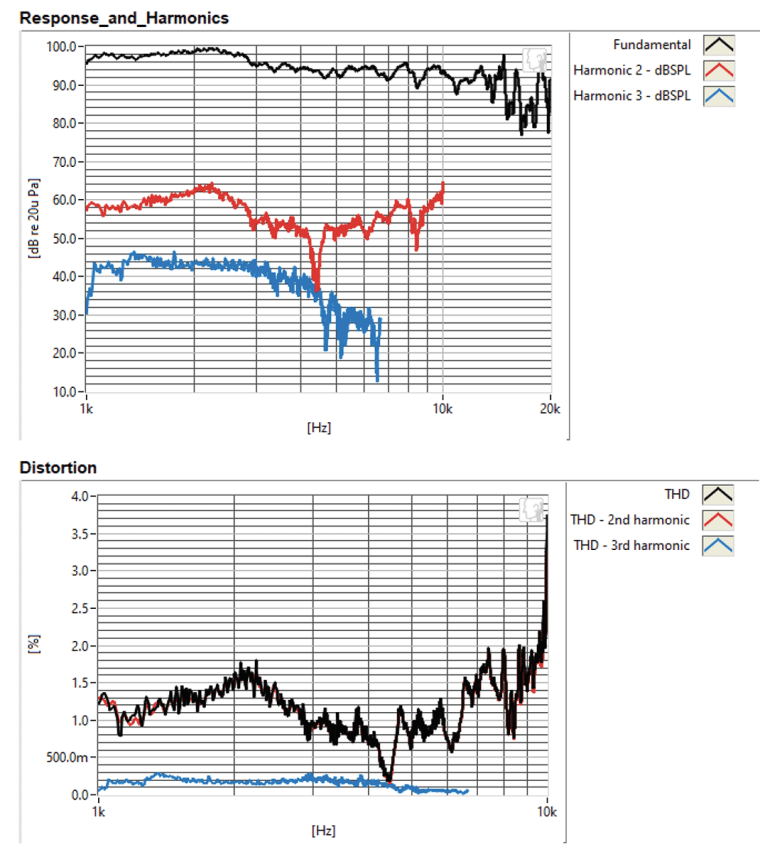
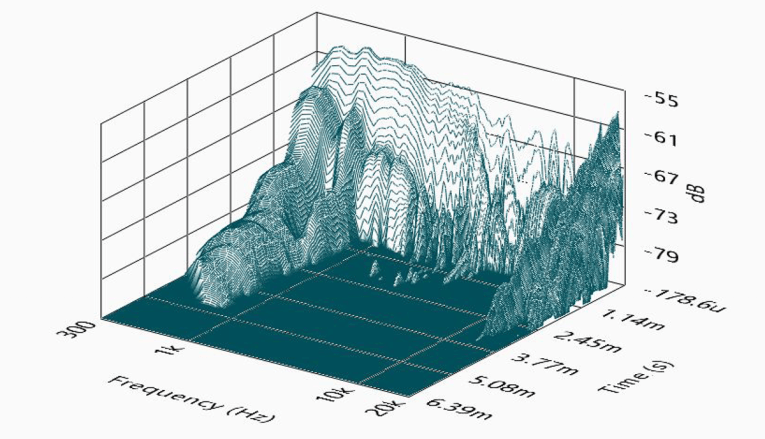
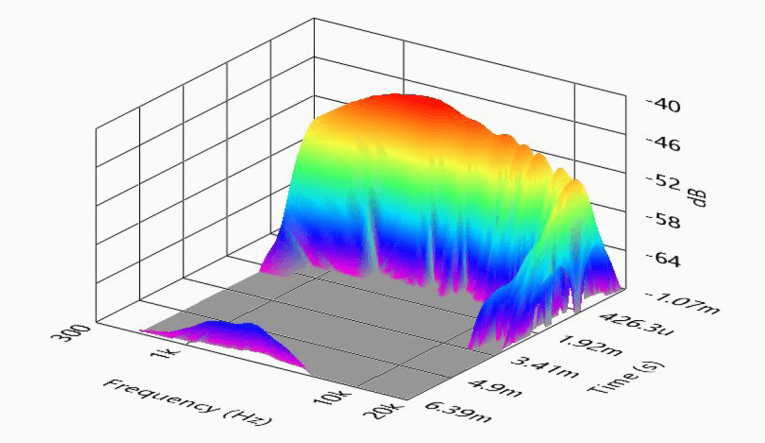
This article was originally published in Voice Coil, April 2020.




